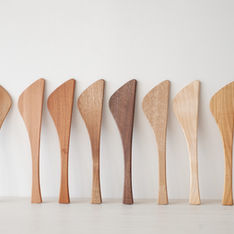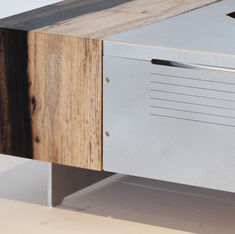
THE STORY
Crafting a Legacy
Approximately two hours away from Tokyo, via the Azusa Limited Express, the landscape gradually shifts from modern city life to views of mountain vistas. Upon arrival at Matsumoto Station, we continued a 40-minute drive, winding through the forests. One can enjoy the sight of mountains, rivers, rural houses, and various trees, as well as visit several hot spring locations. Each mountain displays a range of colors, including deep greens, light greens, vibrant pinks, pale pinks, yellows, and browns, all interwoven harmoniously by nature.
As the road becomes narrow and dwellings become sparse, traveling away from the city limits, we finally embark on mountain trails. Ascending further, doubts of our navigation set in. “Are we going the right way?” From the window, only the sky and trees are visible. After navigating through numerous winding curves, the atelier finally comes into sight. While its entirety remains concealed from the outside, a charming wooden door beckons.
Stepping through the wooden door, we found ourselves surrounded by the mountains—a fitting setting, considering the location's origins. Maeda's father cleared this area forty years ago. The land was transformed from a dense forest into a land suitable for living and creating art.
The Maeda family relocated from Kamakura to Matsumoto, seeking liberation from traditional constraints. Maeda's father hand-crafted every part of their living space. What was new wood forty years ago now exudes rich character, transformed into "reclaimed lumber." Chairs, shelves, tables, window frames—all handmade. While employing traditional methods, the designs demonstrate a distinctly contemporary feel. Maeda-san embodies the essence of his statement: "By embracing traditional techniques, I craft products that seamlessly complement modern lifestyles."

"As our lifestyles evolve, so do the use of materials and the techniques that leverage their potential. However, the roots of the culture remain unchanged."
Artworks are crafted from a single tree, nurtured, harvested, collected, designed, and shaped with various tools to create diverse components from the wood.
An intriguing anecdote arises regarding tools, particularly the indispensable "plane" for woodworking. Crafted from a blade and base, specialized craftspeople also produce these planes. However, with the dwindling numbers of people who make these specific planes, it is imperative to maintain their reliability. Examining even a single shelf reveals a tapestry of stories involving the years of growth for the wood, the craftsmanship of toolmakers, and the artisans' intricate work—all culminating in the finished product. The creation of such works is nothing short of miraculous, as is the serendipitous encounter with them.































